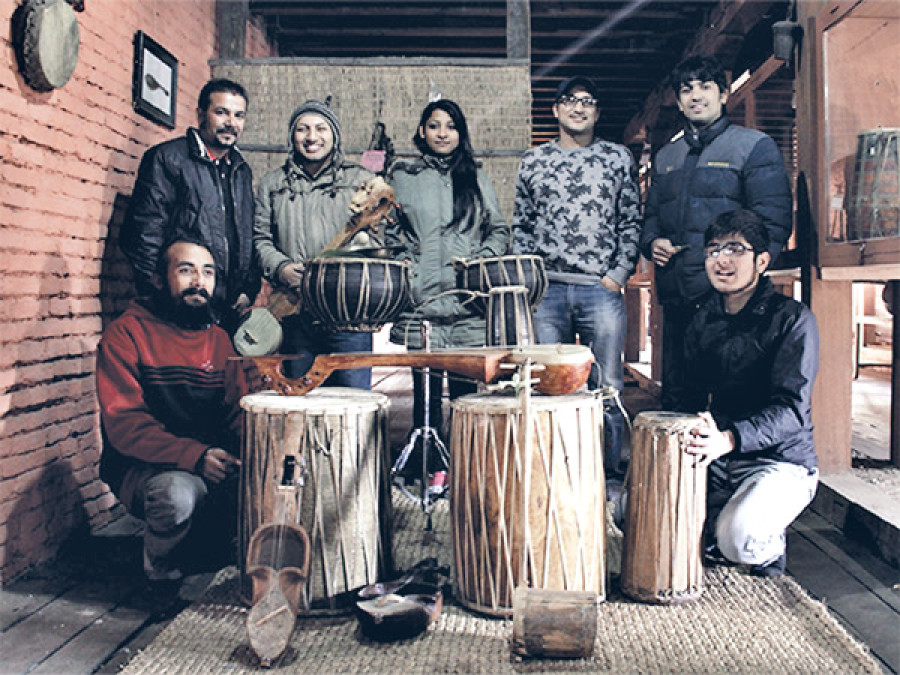Miscellaneous
Into the night
Night band’s simple and stirring Sunko Jutta is a perfect combination of music and visuals
Binit Bana
There is something about sad songs that fascinates me, and I think that is the case with most people; more often than not, our favourite songs are melancholic in nature. My reasoning for this is that, I feel, sadness is a more personal emotion than happiness. Happiness you share with others, but sadness you, more than likely, keep to yourself.
And when it comes to songs that evoke feelings, mostly those that tug on the heart strings, Night’s Sunko Jutta is among the top of my list. Complemented by a striking video, it is something of an experience, at times which borders on tragic. Directed by Bibhusan Basnet and Pooja Gurung, the music video for Sunko Jutta is simple in execution and in its short duration is profusely stirring.
Night is part of a mini folk-revival in the Nepali music scene. In recent years, there has been a surge, or more honestly, a trickle, of artists who have retraced their roots and are bringing local and traditional music to the forefront. Night, however, brings something new to the table. They bring a refreshing honesty. They sing about the longings of the common Nepali, the ones who suffer more than heartaches, the ones who experience life and the little moments of joy along with the overwhelming sadness and disappointment around them. They sing of matters that seem to be overlooked by mainstream Nepali music. Singing about the pangs and joys of the ‘everyman’ isn’t necessarily in vogue.
The music video of Sunko Jutta, in itself, is a small slice of a private moment portrayed in what seems like a continuous shot. In pitch darkness, cut only by the yellow glimmer of torch fire, something is being ferried across a river on a ropeway.
The directors only move through two points: one of the people in waiting, and the other far off in the distance in the night, as flickers of light on the other side of the river.
Shots pan from one side to the other showing cause and effect, effect and cause, the sight of the covered load and a shattered woman, and by the point it reaches the climatic reveal of the cargo—a coffin,all you are left with is the moment where you are not just seeing or hearing something, you are truly feeling it. It may not be so for every viewer and every listener, but in its simplicity the song, with the captivating visuals, stirs the empathy that is at the core of us all humans—the need to understand each other. It pushes us to go beyond our own situation and put ourselves in the shoes of the people in the video.
Even though everyone may not be able to relate to the predicament of migrant labour workers, the band puts it into a term all of us can fully understand: hunger—and the fear of it that pushes us to better our situations. Peopleleave their homes, their families, and their country, in search of something better than what they already have; human beings, throughout history, always have. But the path to the wealth, and those golden shoes, that many think will buy happiness, is marked with blood and anguish.
The video perfectly complements the poignant song, but the directors do something unexpected at the end. As we are shown the marking on the coffin, distinctly letting us know of its Middle Eastern origins, the song simmers to a halt as it reaches the crescendo. The camera moves once more into the darkness across the other side. This time you hear young voices atop the lantern-lit carrier moving away to the unknown, singing “Jaumjaum Kancha, Jaumjaum, Jaumjaum Kanchi, Jaumjaum”. The voices are not sorrowful, they are encouraging, even joyous, reassuring that death is also a start to something new. Even in the darkness there is light somewhere, and no matter the tragedies, life goes on. The video, thus hauntingly, comes a full circle.




 7.12°C Kathmandu
7.12°C Kathmandu










